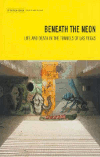

Beneath the Neon

Matthew O'Brien
Reviewed by Michael Odell
- Avoid
- Browse
- Buy
- Love
- Never Play Without It
There's more to Las Vegas than high stakes baccarat tables, showgirls, opulent hotel suites, and celebrity chef restaurants. For all the glitz and glamour that are hallmarks of Sin City, there's plenty of sadness. In Beneath the Neon, O'Brien and Ellis show us a disheartening side of the world's gambling capital. After venturing into the city's storm drains, of all places, the authors encounter many of the city's lost and forgotten souls. Their stories of venturing into the catacombs are not only compelling, but the characters they meet paint a powerful picture of the human condition and America itself.
For those of us who aren’t residents of Sin City, Las Vegas seems little more than one long road of casino resorts and neon-tinged attractions. Few tourists manage to venture “off the beaten track” and it's unlikely any have travelled as far as Matthew O’Brien, author of Beneath the Neon has. Treading through previously unexplored areas of Las Vegas, O’Brien documents his journey through the storm drains of the city, meeting along the way gambling addicts, Vietnam veterans, and a retired horse jockey.
Before O’Brien’s tale of heartache, losses, crime and danger really begins, the reader is greeted with a quote borrowed from Milton’s Paradise Lost: “Aghast the Devil Stood… and Felt How Awful Goodness Is.” The dark reference hits at the tone, theme and content of the book and, while Beneath the Neon is an often saddening and sometimes disturbing book, it’s also an incredibly important one. O’Brien gives those who have been circumscribed, silenced and removed from the brightly lit streets of Las Vegas a voice, something few authors in the city have ever attempted before, and the result is breath-taking.
Down on their luck and, as one resident suggests, still waiting for that elusive royal flush,
O’Brien highlights the plight of the citizens of Las Vegas other residents would prefer to
forget about.
O’Brien, along with fellow writer Joshua Ellis, first ventured into the storm drains of Las Vegas in 2002. While Ellis, who first made the trip in the storm drains alone, reported finding little more than “six-inch-long crawfish”, the CityLife writer also came across clothing, sleeping bags, and other items which would hint at a camp. Over the next four years, the two men and later just O’Brien began their long journey through the catacombs of Las Vegas. The writers began to interview residents, hear their life stories, and discovered why these men and women had become the forgotten children of Sin City.
What’s perhaps most astonishing when reading O’Brien’s tale is the sheer courage of the storm drain residents. Las Vegas architects and city planners obviously built these drains for a reason and, when it rains on the pavements, it floods in the drains. With nowhere else to go, Las Vegas’ underground inhabitants brave the floods and build their lives around the chaos. Perhaps what’s most startling is O’Brien’s report of a resident who is rescued from the tunnels by firemen. While the mainstream media present at the scene report the act as a necessary and downright brave act, the rescued resident suggests that he wasn’t in any danger and was effectively forced to leave by the fire fighters. As the rescued man suggests, “they left me no choice”.
O’Brien’s documentation of the unwilling resident who’s forced to leave his home, due to what the cynical amongst us would call a “photo-opportunity”, as well as other incidents in Beneath the Neon suggest at the local authorities’ lack of understanding when it comes to handling and helping the storm drain inhabitants. For example, Rose, a resident in the tunnels greets the local children, who ask whether those who choose to dwell in the drains are “murderers” and “rapists”. In an effort to educate the children and show them how they too are normal human beings, Rose takes them into the drains and shows them her home. When returning out of the Vegas catacombs, Rose is questioned by the police and scores of parents. Throughout Beneath the Neon, it’s obvious that O’Brien is searching for answers to his many questions, namely just why does Las Vegas “eat its children” and why have so many citizens ended up lurking underneath pavements and manholes. However, after the publication of the book, O’Brien has taken action which will hopefully address the aforementioned mysteries. The author has founded “Shine a Light”, which delivers aid to Las Vegas’ underground citizens, in the form of counselling, as well as medical and housing help.
Few writers manage to capture the quintessential essence of Las Vegas but, O’Brien has managed to grasp the astounding gulf in the city. Sin City counts the likes of Steve Wynn and Jerry Lewis as residents and, just a few blocks away, men and women lurk underground, driven there by the various vices which haunt the city. While O’Brien’s depiction isn’t as glamorous and in that respect, vapid, as other non-fiction books chronicling Las Vegas, it’s the most important, incredible, and moving title to be published on the city to date. It almost goes without saying that Beneath the Neon should not be missed.
